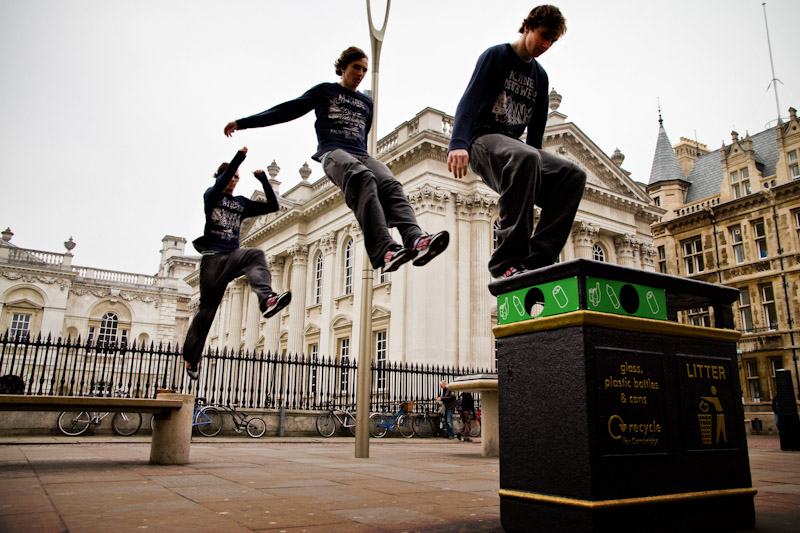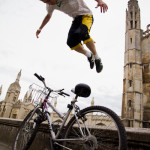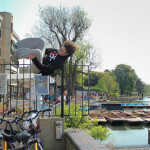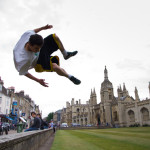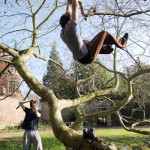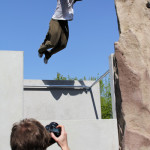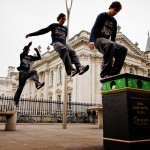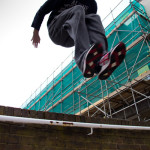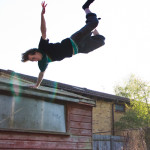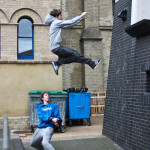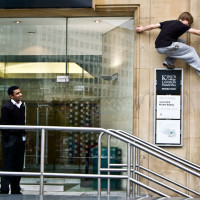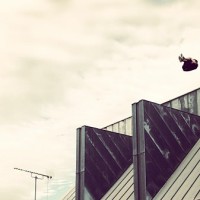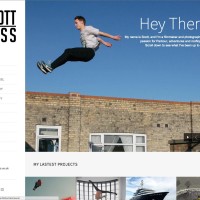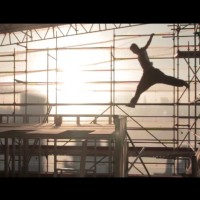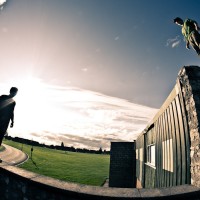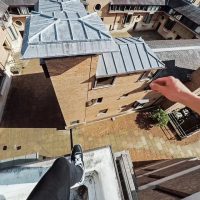I am not a Parkour Photographer by nature. I cut my teeth with photography whilst in College and then pursued my study of the medium with University. I first started shooting Parkour at the start of this academic year when I was asked to produce a ‘self-set’ project. This was no easy task. Being told I could take photos of anything I wanted was a very daunting prospect. Admittedly for the first few weeks of the module I procrastinated beyond belief, but after some time I decided to seize the opportunity and do something I’d never done before. Photographing parkour.
I’d spent a fair amount of time with some friends of mine who are parkour practitioners and so I had a (very basic) understanding of ‘how everything worked’, this however didn’t make things much easier. For me the most challenging aspect was the ability to pre-empt where and when the traceurs were going to be jumping and landing. After a while I gained the communicative skills I needed so that I could discuss these kinds of issues with the athletes. This meant I was then able to strategically place myself in order to get the best shot. This does not by any means guarantee you a perfect image every time. Each shot is different and depending on the skill level of the athlete and the surroundings in which you are in. You may think you’ve found the perfect angle for a particular shot, but as soon as a different athlete comes along, with a different level of skill or technique, and sometimes a completely new style of their own, the whole images changes. Some people jump higher than others, farther than others, faster than others… this is what makes every parkour image different and new and exciting, not to mention very difficult to capture. From a shoot of 30 images or so I am lucky if I can pick 6-9 images I am genuinely pleased with. To some this may seem disappointing and curb their enthusiasm or motivation to continue. To me it just means that for every ‘good’ image I do take, it becomes a little gem.
My images are not always specifically parkour based. I also enjoy shooting the odd flip here and there. These images have a very different feel to them. The action is more dynamic and the shapes formed by the athletes are varied, unusual and sometimes downright disorientating. Parkour is something you do as a response to your environment and it is important to try and capture this within the image. You can’t do an arm jump if there’s nothing to jump to; or a rail precision where there isn’t a rail, whereas a flip can be performed on most surfaces and in most locations.
My original project idea was to focus purely on HOW someone (Scott Bass himself) goes about taking images of Parkour. The aim of the project was to produce a series of photos whereby both the athlete and the photographer were present. These images would then be used alongside an article in a magazine layout to illustrate the sorts of things a Parkour Photographer has to deal with on a daily basis. Although I have followed this idea through, I have naturally and unavoidably digressed slightly. Through doing this project not only have I gained an understanding of what it’s like for Scott to be taking his images, but I have also learnt these things for myself first hand. I now have (what will hopefully be) a good piece of coursework but more importantly, a greater respect for both photographer and athlete alike.
